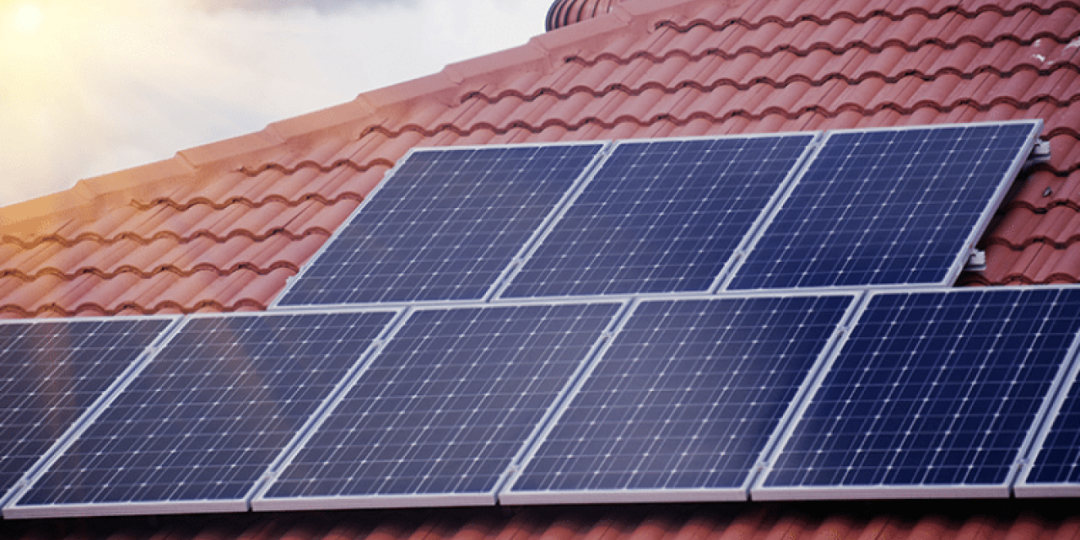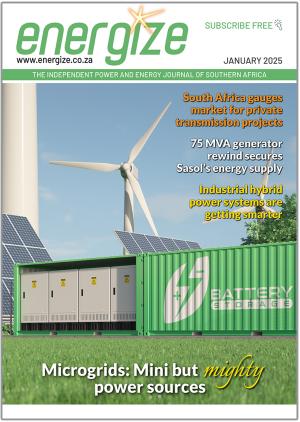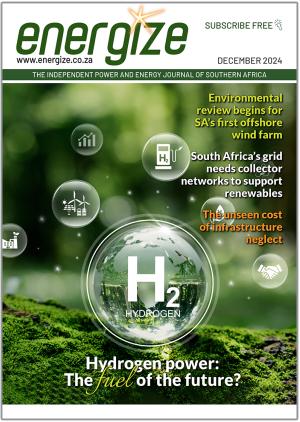Energy expert and MD of Oragen Energy, Johan Cilliers, shares some insight into what consumers who want to invest in a solar PV system, should look out for.
So, you have been considering going solar for a while now, but just don’t know where to start. Who do you approach, what do you ask, and if you end up with several proposals, how do you decide which company to use? What is a suitable and affordable solution?
Things to consider before signing on the dotted line:
1. Size and high level explanation of the proposed solar system
The size of the solar system is based on the number of solar panels and is normally expressed in kilowatts (kW) or megawatts (MW) in the case of larger systems. An average household with a three-bedroom house might require between 3 - 10 kW of solar, depending on the energy consumption and appliances in the house. The size of the plant is calculated by multiplying the number of solar panels by the output power (in Watts) of each solar panel. For example: 20 solar PV panels x 450 watts equals 9000 watts or a 9 kW system. The proposal should include the total amount of energy that the system will generate in kilowatt-hours (kWh), as well as an illustration of where on the roof or carport the system will be installed.
2. Main components of a solar system
The first component is solar PV. It generates electricity in DC (direct current) format. Electricity received from the municipality or Eskom is in AC (alternating current) format. To connect and integrate your solar system with your house electricity, you need to convert the solar power from DC to AC. This is done with an inverter, the second main component of your solar system. And if you need power during load shedding, you will also need to install a battery energy storage system (BESS) as your solar system will also be off during load shedding.
Other components include charge controllers to regulate at which rate electrical current is added to, or withdrawn from the batteries, racking & mounting structures, wiring and/or cables and a Balance of System (BOS) which includes, DC/AC disconnects, combiner boxes, circuit breakers, fuses, rapid shutdowns (fireman’s switch), surge devices, among other components which may vary from system to system. The list of components should be included in your proposal and must indicate the quantity, brand of components, the output power of the PV panels, as well as an outline of the manufacturer warranties.
3. Warranties and guaranties
A proposal should include two types of warranties. Firstly, the manufacturer warranties for the main equipment, i.e., solar PV, battery and inverter. Secondly, you need warranties and guarantees from the solar company that is installing your system. These are a workmanship warranty, plant production guarantee, and an Electrical Certificate of Compliance, and in some cases remote monitoring. The latter is normally combined with operations and maintenance services. The production guarantee from your solar company is very important and basically guarantees the amount of power that the solar system will produce.
4. Project description
The proposal should clearly indicate what is included, i.e., design, SSEG (a system connected to the wiring on your premises which is connected to the distribution network), mounting structures, PV modules, inverters, optimisers, DC isolation box, cables, breakers, cable trays, logistics and installation, insurance, trenching, etc. It should also outline what is excluded, i.e., structural sign-off, roof structure repair, water proofing (beforehand), replacement of roof (in the case of asbestos roofs, etc.). A good solar company will also include clear and well-defined terms and conditions in the proposal.
5. Project schedule
From the time that you accept and sign the proposal until the solar system is commissioned (up and running) can take several weeks. A project schedule normally includes a timeline for design, development, project kick-off date, site set-up and installation. Depending on the size of the project, it can take from as little as two to three days to several weeks for larger projects.
6. Project electricity rates (tariff)
A solar company will be able to show electricity saving (or avoided cost of electricity) based on your electricity bill from the body corporate, municipality or Eskom. To do this, the solar company normally needs 3 to 12 months of electricity bills to determine your consumption and what type of tariff you are on. Tariffs typically include a base or service charge, energy cost, demand charges, and possibly additional charges like ancillary services, subsidies, and more. If the bills are not available, the solar company might ask to install temporary meters to measure the load over a one-to-two-week period.
The solar company needs to take all of these into account to determine what the saving will be if you invest in a solar plant. It should also provide a forecast or escalation of the tariff. Solar companies might predict a high utility tariff escalation to increase the predicted savings and hence improve the business case. The best method to determine the future tariff escalation is to look at historical data. In comparing the proposals, understand what escalation the different companies used to predict your savings.
7. Investment analysis
For larger installations a solar company should include a cumulative cash flow analysis over a 10 or 20-year period in their proposal. Solar project investments normally have a fast return during the early years of operations and taper off toward the end of the period. A cumulative cash flow analysis will show how fast you will get your money back on your investment (break-even point). The cash flow analysis must show the solar production, the electricity savings based on your current consumption, depreciation, tax credits, operation & maintenance, yearly cash flow, cumulative cash flow, cumulative saving, and return on capital as well as return on investment (ROI).
8. Payment terms
Be clear on the payment terms and milestone dates before your commit. The milestone dates will indicate progress and are often related to payments. Many solar companies only purchase the main equipment when the customer signs the proposal and would need a fair size of the installation costs to be paid upfront, especially for residential solar systems. To make sure the installation starts on time and as promised, ask your installer to confirm that the equipment is available according to the project schedule.
About Oragen Energy
Oragen Energy is one of the leading providers of fully integrated energy solutions in South Africa. It is backed by its parent company, Dartcom a proudly Level 1 B-BBEE company with 42 years of experience. When it comes to selecting an alternative energy solution there is no one-size fits all product which will exactly meet every customer’s needs. Oragen offers quality-driven, customer energy needs analyses, consultation, design, engineering, installation, and commissioning of fit-for-purpose energy solutions. There are also flexible ownership options, including an outright purchase, or financial solutions based on a power purchase agreement (PPA) or capacity charge agreement (CCA) over an agreed period, ranging from 10 to 20 years.
Contact Johan Cilliers, Oragen Energy, Phone 012 345-7530, info@oragen.co.za















